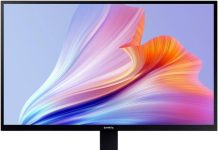Mold is a common issue in indoor environments, posing health risks and potential damage to structures. To address this concern, the use of mold detectors has become increasingly popular. These devices are designed to identify the presence of mold, providing valuable information for homeowners, property managers, and occupants. This article explores the importance of mold detectors, the various types available, and their usage in maintaining a healthy indoor environment.
The Importance of Mold Detectors:
- Early Detection:
- Mold detectors enable early identification of mold growth, allowing for prompt remediation and preventing extensive damage to property.
- Health Protection:
- Timely detection of mold helps protect occupants from the health risks associated with mold exposure, including allergies, respiratory issues, and other related ailments.
- Property Preservation:
- By identifying mold in its early stages, property owners can take preventive measures to preserve the structural integrity of buildings and avoid costly repairs.
- Real-time Monitoring:
- Some advanced mold detectors offer real-time monitoring, providing continuous data on indoor air quality and mold levels.
Types of Mold Detectors:
- Air Quality Monitors:
- These devices measure various air quality parameters, including mold spore levels, particulate matter, humidity, and volatile organic compounds (VOCs).
- Mold Test Kits:
- Test kits typically include sampling materials (swabs or cassettes) and instructions for collecting samples from surfaces. The samples are sent to a laboratory for analysis to identify mold types and concentrations.
- Moisture Meters:
- Moisture meters are essential for detecting and measuring moisture levels in building materials. Excess moisture is a key factor in mold growth, and these devices aid in identifying areas prone to mold infestation.
- Infrared Thermographic Cameras:
- Infrared cameras detect temperature variations in building materials, helping identify areas with potential moisture problems and hidden mold growth.
- Hygrometers:
- Hygrometers measure humidity levels in the air. High humidity is conducive to mold growth, and these devices assist in identifying areas where humidity needs to be controlled.
Usage and Best Practices:
- Regular Monitoring:
- Employ mold detectors regularly, especially in areas prone to moisture such as bathrooms, kitchens, basements, and crawl spaces.
- Follow Manufacturer Instructions:
- Adhere to the instructions provided by the manufacturer for proper use and maintenance of the mold detector to ensure accurate results.
- Interpretation of Results:
- Understand the results provided by the mold detector. Elevated mold levels may indicate a need for further investigation and remediation.
- Addressing Identified Issues:
- If mold is detected, take immediate steps to address the source of moisture and implement remediation strategies to eliminate the mold.
- Combining Technologies:
- Consider using a combination of mold detectors to obtain a comprehensive understanding of indoor air quality, moisture levels, and mold presence.
Conclusion:
Mold detectors play a crucial role in maintaining a healthy indoor environment and preventing the adverse effects of mold growth. By utilizing different types of detectors and following best practices for their usage, individuals can identify potential mold issues early on and take prompt remedial actions. Regular monitoring, interpretation of results, and proactive measures contribute to creating a mold-free and safe living or working space.







